** A short video with underwater footage appears below **
This Q&A series is an effort to answer some of the most common questions I receive. Here’s the latest . . .
Last week, I published a review of Grip Studs — the wading boot traction solution I’ve been wearing for eight years now. These are single point tungsten carbide tips that bite into the riverbed and provide superior traction.
In response, questions and musings came in about whether metal studs scraping on rocks spook trout in the river. It seems that every time studs come up in conversation among a group of dedicated anglers, this topic arises.
So let’s think about it . . .
READ: Troutbitten | 1000 Day Gear Review — Grips Studs: Unmatched Traction for Wading Boots
Question
This one is from Jim, via the comments section below the Grip Studs review article:
Dom,
Our local shop swears up and down that studded boots scare spooky fish — like hearing rocks clinked together under water. What are your thoughts?
Answer
Thanks, Jim.
This is a common objection to studded boots. The premise is fair. We give trout a lot of credit for being a wary species, and we make many mistakes that turn them off.
If you believe trout can hear studs on the rocks and you believe it bothers them, then I suggest not using studs. You can’t let something like that take your confidence away.
However, I think concern about noise from studs is unwarranted. In most cases, I believe metal studs scraping on rocks doesn’t scare trout, because they simply don’t hear the sounds of our studs. And if they do, the way those sounds mix together with the river’s soundscape, trout just don’t care.
READ: Troutbitten | Are You Spooking Trout?
Would You Rather Fall In?
What makes more noise? Studs on rocks or a stumbling angler with poor traction?
Many trout waters are simply not wadable without some type of studs for traction. So an angler without studs fishes poorly by trying to push distances and not wading into great positions. The fishing not only falls apart, but the pure enjoyment of being on the river is minimized. That angler then stays home next time.
See what I mean? We need to get to the right spots to catch trout. Fly fishing is a limited range system. It requires good positioning to be successful with great presentations. So we wade. But without good traction, we don’t wade very much, we wade more tentatively or we don’t wade at all.
The difference in traction from properly studded boots vs non-studded is night and day. I wade twice as hard and twice as far with studs in my soles. And I would never trade that assurance just to be a little quieter.

In slower sections like this, can trout hear you coming?
They Can’t Hear It, and They Don’t Care
But let’s get more to the point that the guys from your fly shop are making — that studded boots scare spooky trout . . .
I guess if that’s true, then anglers with boot studs just wouldn’t catch many trout. Right? I assure you that’s not the case. Anglers all over the world wear boot studs, and they catch more trout than those without, because their approach is better, and they can fish harder.
Do trout hear the scraping of studs? Sure. In the softest water types, in slowest pools, yes. But in most rivers with mixed currents, I believe there’s no way they hear the studs. I know this and believe it strongly, because I’ve tested it.
Try standing in a piece of pocket water. Now put your head underwater and hear how loud it is.
That . . . I have not done. But I have put a GoPro under there. Years ago, with my first GoPro, I filmed a bit of underwater footage — mostly the release of a few trout. And I was startled by how loud it was under the surface. I remember thinking there was no way that trout heard my approach in most water types.
There’s a lot going on in a river. There are a lot of natural noises.
But sound travels faster under the water, right? Sure, but all sounds travel faster, not just the sound of scraping studs. So the sounds of currents sloshing and turning underneath dominate a river soundscape. In most parts of a river, it’s a mess of noises down there, and it all gets blended together. I think trout don’t hear the scraping of studs, just like we can’t hear birds next to a busy four-lane highway and we can’t hear the toenails of a squirrel on a nearby tree during windy days.
PODCAST: Troutbitten | The Spooky Trout — What Scares Fish and How to Avoid Spooking Them, S5, Ep3
This question kept nagging at me since I published the Grip Studs 1000 Day Gear Review, because I’ve grown weary of the speculation and theory without hard data. I think we all have.
So over my last few two days on the water, I filmed a dozen shots, in various water types, with a GoPro underneath. My son, Aiden, helped with some shots, and I filmed the majority with the GoPro sitting under the water, on a low tripod near the riverbed.
Here’s a video to show the results.
(Select 4K or 1080p HD, and Turn the Volume Up)
My tests were done from fifteen to five away, and you can see that I’m often just a foot away when I pick up the GoPro. In this short video, I didn’t show anything further away than ten feet, because even in the slowest water, footsteps could not be heard. Rivers are noisy. And at the distances we fish (much more than ten feet away) trout cannot hear normal wading, let alone the scraping of boot studs.
Remarkably, I couldn’t pick out even one instance of studs scraping on the riverbed. I’m sure the sound is there. I know studs scrape, because I’ve heard it myself in skinny water. But the sound of studs, in these videos, was buried by all the other noises underneath.
It’s easier to distinguish the sloshing of wading than any sound from studs. Likewise, I was surprised how much more my voice carried under the water than almost anything else. Especially in the shallow stretches, my voice was sometimes clear enough to make out words.
The speed and choppiness of the current matters, of course. And we know trout are spookiest in the slowest sections of a river. So with quieter currents, footfalls will be heard sooner. In these tests, I quickly realized that trout can’t hear anything but river noise in standard pocket water, so I started selecting the softest and slowest pools I could find. Those clips comprise most of the video above, but you still can’t hear footfalls until they’re close.
The idea that studs gripping to rocks is like “two rocks clinking together” is false. The natural sounds of a river dominate — even in the slow stuff.
The substrate of the riverbed matters too. Sandy bottoms or algae covered rocks don’t permit much scraping, and they act as a carpet. In the tests from the video, I chose clean, rocky areas. The rocks averaged double the size of my hand and were fixed to the riverbed. I usually placed the GoPro in twelve inches of water with a more even surface, so that’s the substrate you see. Again, there were no distinguishable sounds of wading until I got closer than five to ten feet. And I never heard studs scraping on rocks.
Don’t believe it? Try this yourself? Take a GoPro or a modern phone with an IPX7 rating and record underwater. Seriously. Do this with someone wading nearby.
Still don’t believe it? Do you think the microphones of a GoPro and a camera pick up something different than what a trout hears? Then dunk your head underwater and find out. 🙂
Trout can’t hear your boot studs — not in a river with any movement to it. So stud-up those wading boots and love your life.
Fish hard, friends.
** Donate ** If you enjoy this article, please consider a donation. Your support is what keeps this Troutbitten project funded. Scroll below to find the Donate Button. And thank you.
** Subscribe to Troutbitten and follow along. (It’s free.) **
Enjoy the day.
Domenick Swentosky
T R O U T B I T T E N
domenick@troutbitten.com


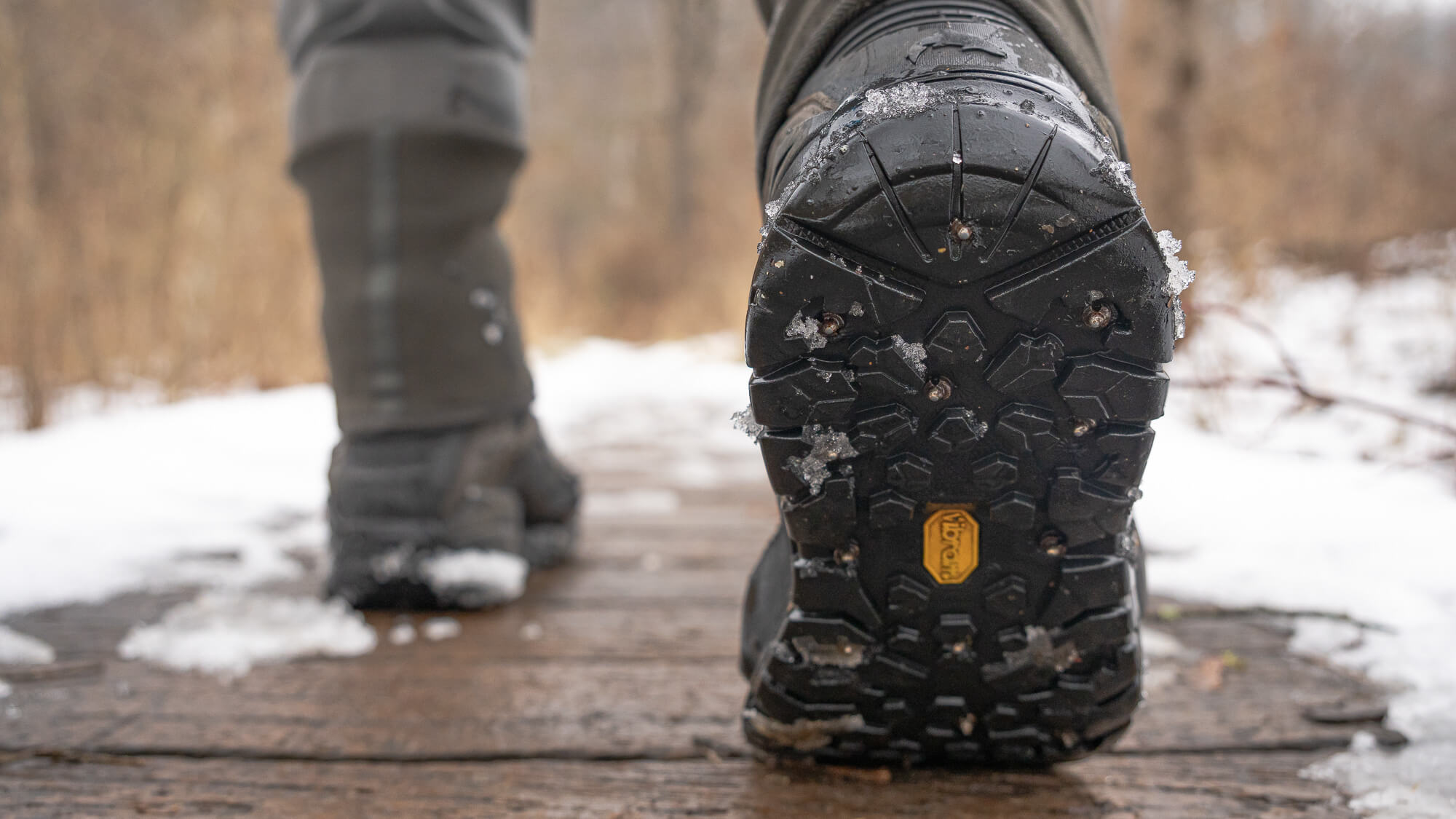
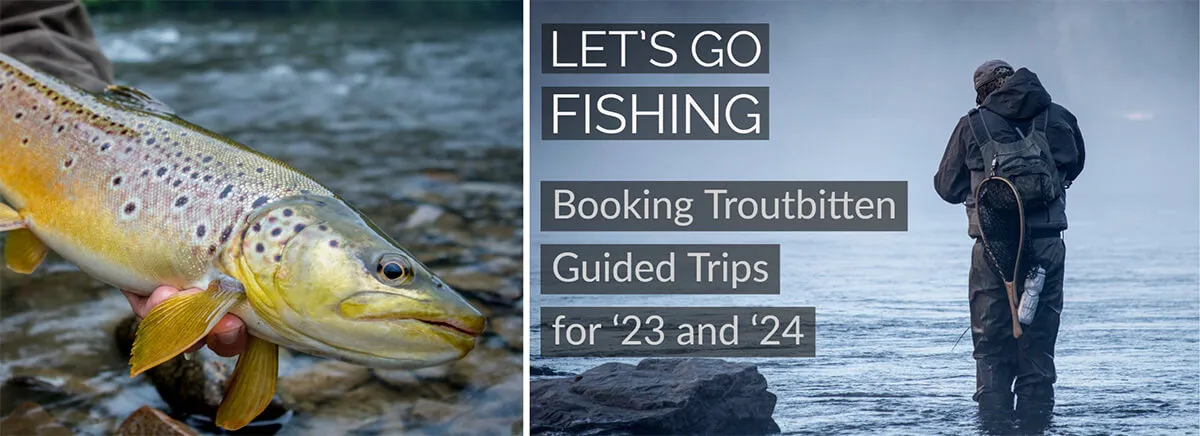
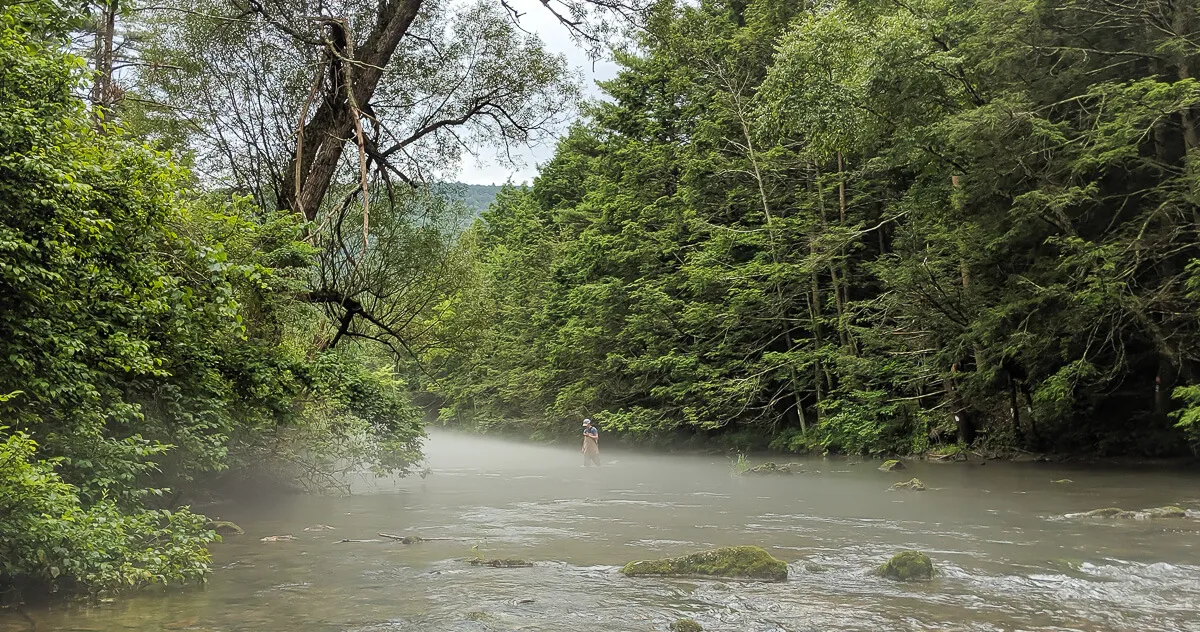
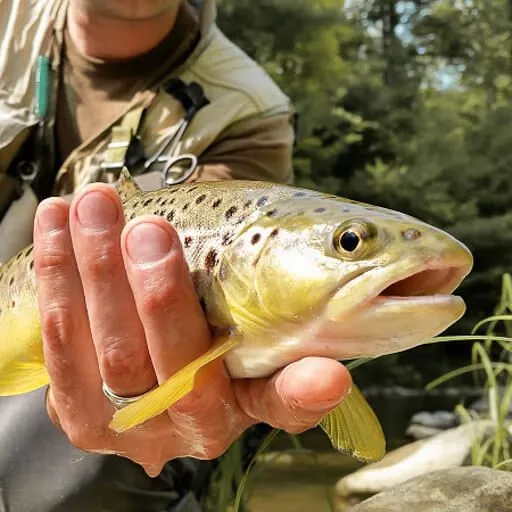
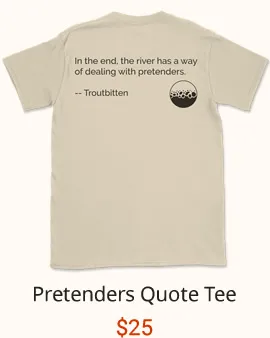

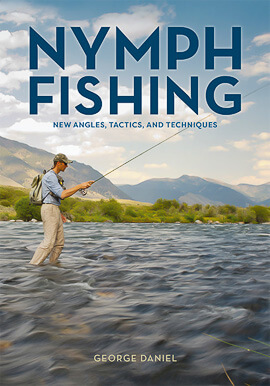
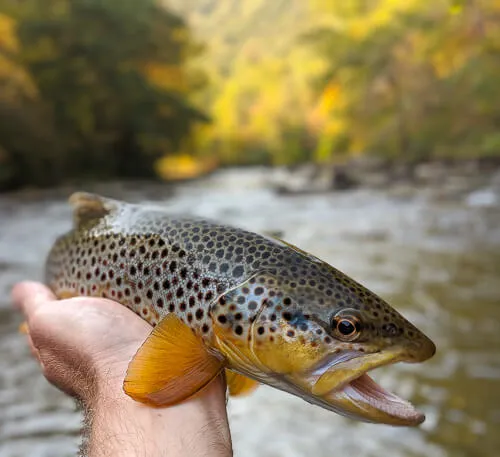
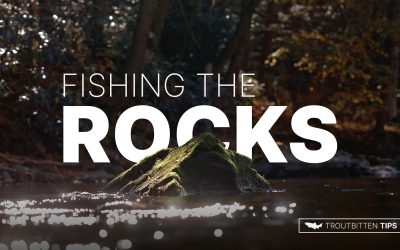
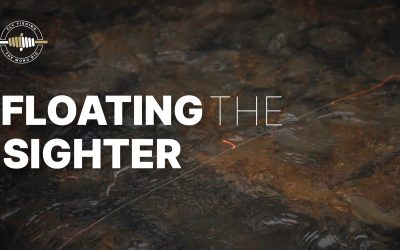
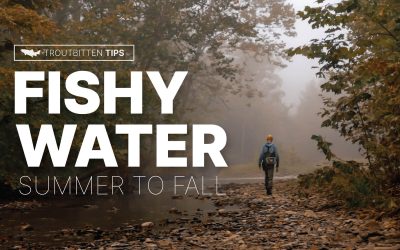
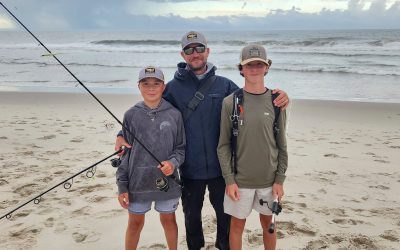
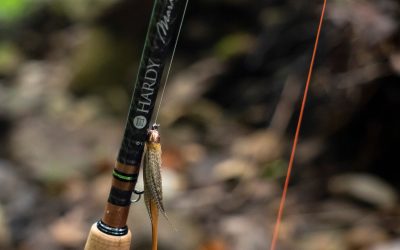
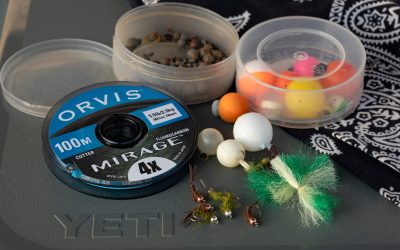

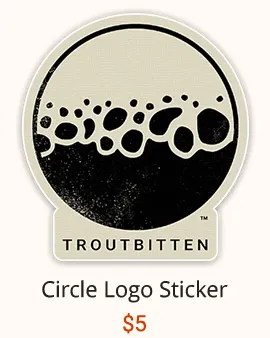
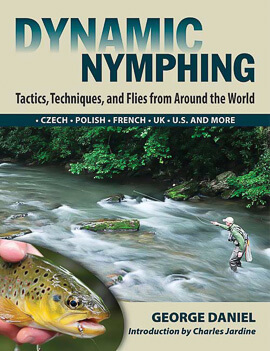
What a great question to explore. My experience is that although wading might initially spook fish, a few moments later, after everything calms down, the fish settle back in. Lots of things spook fish (fishing lines landing, casting, bright colors, your silhouette, unnaturally presented flies…) Another interesting question in your experiment is if fish experience sound the same way a go-pro records. Bottom line: studs let you fish safely and allow you to cover water.
Good stuff.
I’m still looking for the GoPro model that has a lateral line.
Lateral line is a different topic, right? The point here is that SOUNDS get mixed and buried in a relatively short distance under the water, even in the slower stuff. The lateral line picks up waves and vibrations. Those too get mixed in and eliminated in the same condition. We see that effect in a pool, for example.
I don’t own a device that tests like a lateral line does.
Dom
I think just walking on loose rocks and gravel would generate more noise and vibration than boot studs. I’ll risk spooking the fish over falling any day! I guess falling would really spook the fish!
That how I think of it too.
Can I assume the same is true with wading staffs
YES. In fact, I was using my wading staff the whole time. You can briefly see it in the video.
I agree with you 100 percent that the sound of boot studs makes no difference in moderate to fast flowing water. If it matters at all in still or slow moving water it pales in comparison to the effect of wave generation or casting shadows. Bottom line: to avoid spooking trout keep a low profile and approach as slow as possible, preferably out of the water if possible. Even fallfish will spook if approached carelessly.
I recently listened to an Orvis podcast from 2019 where Tom Rosenbauer interviewed a neurologist from Stanford U who studies the brains and senses of trout, particularly rainbow trout. This PhD was adamant that there was no way trout could hear the scraping of studs in the river. His arguments were exactly the same as yours Dom. There is too much background noise. He allowed that in a very slow pool, a trout MIGHT hear a scraping boot stud. But I think your little experiment showed that wasn’t the case.
I always have studs or bars on my boots. I can not count the number of times I have taken a step in moving water and seen a fish dart off from no more than a foot or two from my foot. I frequently spot water at night after fishing it. At least 100 times I have waded half way up a run, stopped and spotted the water. There is usually at least 1 trout with in a few feet of me. Sometimes alarmingly close.
They might be able to hear with their otolith, or detect the vibrations in their lateral line but not until you are almost directly on top of them. at which point it doesn’t matter because you have already drifted your fly past that fish. It’s much more likely that they spot your movement or shadow before you are anywhere near close enough to them for the grips studs to created enough disturbance in the water to signal danger to the fish.
If they had the ability to discern signals created by foot steps that acutely, no one would ever catch a fish with or with out grip studs.
I’m all in on that comment. Ha.
This is another reason why I love your work. You frequently back up your points and tactics with logical thought, testing and data. Oh, and you help me catch more fish!
The results of your analysis make sense; I agree with them. I suspect the pros, like Devin Olson, Lance Egan, et al, would agree as well. As I understand it, in competition they’re fishing tight lines much of the time, so when casting they’re often close to the fish, and they’re moving throughout a beat under time pressure, so having to move pretty much constantly they would want to be as stealthy as possible while also avoiding falls. I am not aware that they advise against using studs.
Competition angler or otherwise means nothing to me, because the best anglers I know are not competition anglers. They all wear studs.
Cheers.
Dom
I have a question about studs and soles that you use. I live close to Great Smoky Mountain National Park and for years have most of my fishing there I have always used felt soles these. I fish several weeks every year in the Driftless region of Wisconsin fishing spring creeks. There I use vibram soles. I am curious, do you use vibram soles and studs for all of your fishing or do occasionally use felt soles with studs?
HI Joel. I use rubber soles all the time, almost always with studs. I fish, walk and wade so much that felt doesn’t last long for me — just a few months. Felt is also really bad in the winter, where I am. And I don’t like hiking much in felt.
Cheers.
Dom
Dom and all,
I love your “approach” to this (sorry) . Logic and especially physics are difficult to argue against.
I came to comments to weigh in on the lateral line issue, but the crowd has done well before me. Incidentally the lateral line is more than a pressure sensitive organ, it also senses chemicals in some species and helps the fish stay oriented in a vortex of water movement and fish movement. Handy sense organ to have.
I wanted to add in a bit also about the Doppler effect. The travel speed and frequency of the sound will be affected by the direction of the water movement. Sound waves traveling upstream will be competing with the water flow and will be slowed and eventually stopped. Sound traveling downstream will travel faster than normal and will change frequency over distance. Your voice on the video was not affected by the movement of the water so it traveled with less constraint than some of your foot sounds, reaching the microphone in better condition and was therefore more recognizable.
So the underwater acoustics of a flowing stream is a noisy place with many competing sources of sound and most sounds being modified, amplified or cancelled by competing sound waves and environmental conditions. Fish and people don’t “hear” the same way and interpret sound in different ways. The sound of rock colliding and gravel moving is a normal background sound in many streams especially at higher flows.
The “spook” reflex in trout is undoubtedly complex and influenced by sight, sound “smell” and tactile input including from the lateral line. The combinations of sensory stimuli that triggers the “spook” is a secret we’d all like to know.
We know the obvious ones…….
Very cool.